For if the truth be told there is little more than a single path to all the goals that the undisguised European may reach.
– Morocco (1904), Samuel Levy Bensusan
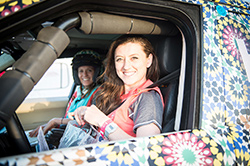 Counting competitors, staff, press, guests and strangers, we were about 350 people bunched up in a conference room in the Xaluca Hotel in Erfoud, Morocco. We'd arrived there via a flight to Paris, another to Casablanca, a mythic ten-hour drive through Rabat and Meknes and stupefyingly emerald-green-grass valleys in the plains of the Middle Atlas Mountains, cracking the spine of the High Atlas to descend into the grueling void edged by jagged, prehistoric cliffs that Edith Wharton called "the savagery of the south." This is where it would begin.
Counting competitors, staff, press, guests and strangers, we were about 350 people bunched up in a conference room in the Xaluca Hotel in Erfoud, Morocco. We'd arrived there via a flight to Paris, another to Casablanca, a mythic ten-hour drive through Rabat and Meknes and stupefyingly emerald-green-grass valleys in the plains of the Middle Atlas Mountains, cracking the spine of the High Atlas to descend into the grueling void edged by jagged, prehistoric cliffs that Edith Wharton called "the savagery of the south." This is where it would begin.
"It" was the 24th running of the Rallye Aïcha des Gazelles, an off-road rally for women only. There were 320 competitors in the room – 160 teams of two women apiece from 24 countries, some of them ex-Olympians, professional rally drivers and celebrities, 243 of them first-timers, somewhere around the same number of them French.
Automakers had come, too: Volkswagen sent ten teams in Amarok pickups, Women@Renault and La Poste put 13 teams in Dacia Duster utilities, Mercedes-Benz had three teams driving Sprinter vans, BMW Azzuro sponsored a motorcycle team. The rest was run-what-you-brung as long as it fit into the three categories: 4x4, Crossover – where the Dusters and Sprinters lived, and Quad – where the ATVs, side-by-sides and the sole motorcycle duo lived.
Rally organizer Dominque Serra told the crowd, "You are all amazing to embark on this great adventure without really knowing what to expect for the next ten days!" When I read that line after the event, I lost my half-swallowed drink to involuntary laughter. I didn't know it then, but Serra's cheer was like a Roman empress telling Christians at the Coliseum "I know you're all going to be fantastic!" as the lions clandestinely waited in the nearby dark.
At the time, I was too busy laughing at another line, delivered twice because the organizers took it so seriously. It's the kind of directive you'd only hear when 320 women go on a mission through the North Sahara with a large contingent of male support staff: "No sex with the competitors!"
La Prise du Drapeau
This isn't a rally like we normally think of it, like Dakar; it's a navigation challenge in the desert, in cars. It's a big game of capture the flag.Between these nomad colonies lies the bled, the immense waste of fallow land and palmetto desert: an earth as void of life as the sky above it of clouds. The scenery is always the same; but if one has the love of great emptiness, and of the play of light on long stretches of earth and rock, the sameness is part of the enchantment. In such a scene, every landmark takes on extreme value.
– In Morocco (1920), Edith Wharton
Over nine days and six stages, each driver-navigator team has to find 60 checkpoints marked by red flags planted somewhere in more than 10,000 square miles of Moroccan landscape – hidden by trees, dunes, valleys, sandstorms – with no electronic or visual aids; organizers confiscate anything with cell service, GPS or wi-fi, and anything that enhances vision, like binoculars.
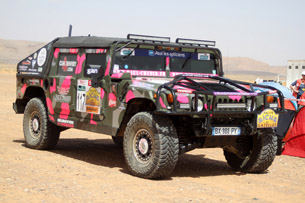
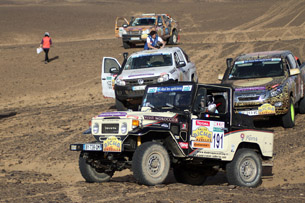
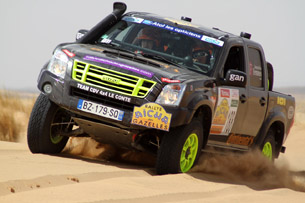
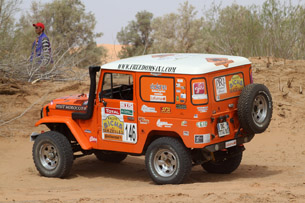
The point is to find each checkpoint via the shortest distance, not the quickest time. Once you think you know where the flag is, the aim is to get there by driving a straight line through anything. Every kilometer over the official distance hits a team with one penalty point. Penalty points are also assessed for infractions like missing a checkpoint or calling for mechanical assistance. The team with the fewest penalty points at the end of the race wins.Each team has to match outdated map features to the 21st century landscape, take their headings and navigate to their plotted checkpoint solely by what they can see.
Each vehicle is fitted with an Iritrack terminal clocking its location and speed, a button to request help from the rally mechanics and a SARSAT distress beacon. Otherwise they're not allowed assistance from anyone but other competitors. Every inch they drive is watched on monitors at race control and by "sheriffs" on the course. To prevent teams from driving in formation, the field is split into five groups, the groups change every day and the group breakdown isn't published until the morning of the stage.
Each team is given 23 large, 1:100,000- and 1:250,000-scale paper maps from the late fifties and uses elementary-school navigation tools: a compass, a Bretton plotter, a calculator. When plotting a checkpoint, a team is given some combination of latitude or longitude or distance or heading, the navigator has to fill in the rest. To prevent cheating, teams get incomplete coordinates for just the first checkpoint for the day at the bivouac. When they reach that first checkpoint, they're given the partial coordinates for the rest of the day's flags. To get through stages successfully, each team has to match outdated map features to the 21st century landscape, take their headings and navigate to their plotted checkpoint solely by what they can see. There are no pace notes. When a sandstorm reduces visibility to 100 feet, you have to take a new heading about every 100 feet.
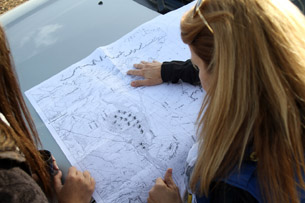
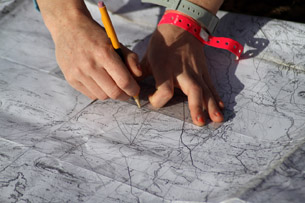
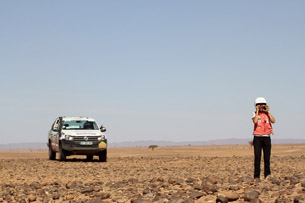
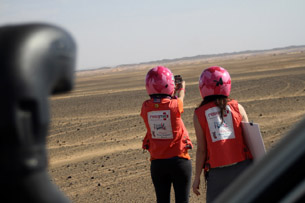
It's like having to find 60 flags hidden in a virtually uninhabited terrain the size of Maryland, using maps given to you by your grandfather, made when the Chevy small block was one year old.
One of the event organizers had said, "Anticipation is the key."
Yeah. As Mike Tyson said, "Everybody got a plan 'til they get hit."
The Seven-Hour Prologue
The first day was a looped prologue of three checkpoints and an ideal distance of 45 kilometers, to give the women "a chance to get used to the maps, to fine-tune the teamwork between driver and navigator." It wouldn't count toward the final standings.There were gloomy rocks on all sides, the dry bed of a forgotten river offered us an uncomfortable and often perilous path, and we passed several cairns of small stones.
– Morocco (1904), Samuel Levy Bensusan
It started at 2:00 PM. Organizers estimated two hours to finish, but "the last Gazelles should reach the bivouac by 7:00." The first team didn't make it back for almost three hours. Only 35 of 160 teams had made it back after four hours, and some of them hadn't found all three checkpoints. There were still 35 teams on the course at 7:00 PM, the last one crossing the line at 9:00 PM.
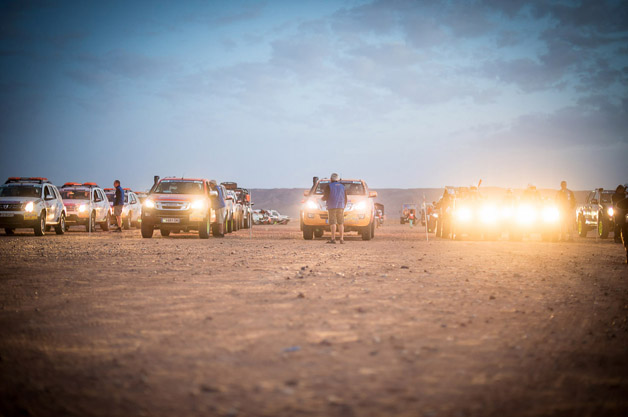
Race Director Ludovic Taché told the women, "The rally is about managing one's time and sleep." The easiest day of the whole event showed the rally would actually be about getting sleep.
No Man's Land
It's not a matter of being bad navigators, even though some of the them surely were, because navigating prowess is only one small piece. The most important issue is southern Morocco itself. The quotes from Samuel Levy and Edith Wharton are from travel guides written 110 and 94 years ago, but our ricocheting bones relived their experience a century later. It remains an onerous land to cross even if you know where you're going, and most of the competitors didn't.After leaving the macadamized road which runs south from Tangier one seems to have embarked on a petrified ocean in a boat hardly equal to the adventure. Then, as one leaps and plunges over the humps and ruts, down sheer banks into rivers, and up precipices into sand-pits, one gradually gains faith in one's conveyance and in one's spinal column; but both must be sound in every joint to resist the strain of the long miles...
– In Morocco (1920), Edith Wharton
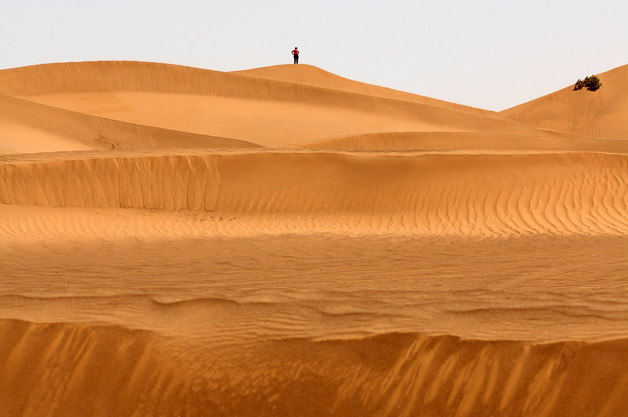
Although it wears the generic label "desert," the terrain is profusely varied. The vocabulary alone flexes the palate: erg, oued, reg, wadi, fesh-fesh. The experience stretches belief. Sand as hard as concrete, as soft as talc, in formations imported from Mars (forget about faking the moon landing, the Mars Rover is in Morocco). Sandy fields of square rocks, rocky fields of sand, sandy fields of round rocks. Hard-to-see crannies that have been dining on suspension parts for 110 years. Long, deep river beds filled with boulders that say, "No" when you think, "Maybe..." Camel grass, sparse bushes sprouting from mounds of sand as hard as stone bollards. Tiny shoots of vegetation nicknamed "cauliflower" that are even harder and love to make your truck go "BOOM!"In two hours, the land can destroy your vehicle, your body, your hope of getting anywhere quickly, your hope of getting out alive.
In two hours, the land can destroy your vehicle, your body, your hope of getting anywhere quickly, your hope of getting out alive. Morocco is for off-roaders what the Nürburgring is for sports cars, one of the reasons the first Range Rover was sent there to make rank.
You can't drive it quickly – 25 miles per hour is flying. That's why there's no Gazelles Rally for men; we see a flag in the distance, we want to "Git some!" There was a men's rally once, in 2002. By the second day, 75 percent of the trucks were shattered. Here you'll find the real meaning of "Slow is fast," as well as, "Slow is alive."
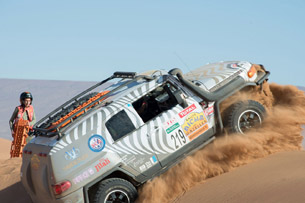
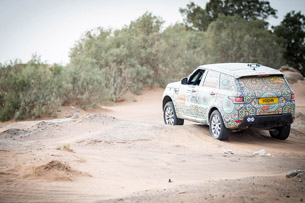
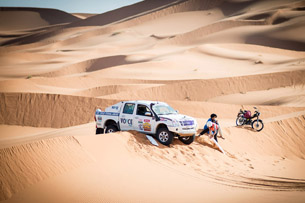
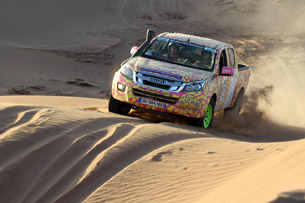
Furthermore, the race is designed to make it hard for the teams that can win, the ace drivers and navigators. There's no set of easy checkpoints for novices. If you're learning on the job, you just do the best you can.
The craziest bit: every team has paid $18,540 for the chance to compete. Some have to rent trucks for another $9,000. The rally-provided food while out on stage is military rations. There are no cash prizes. The winner gets a medal.
And every day, every inch of ground ruthlessly makes the point, "You should have brought a camel."
Wake-Up Call
In such a place as this one might wander for hours within a quarter mile of camp, and then only find the road by lucky accident, particularly if the senses have been blunted by very long residence in the heart of European civilization.
– Morocco (1904), Samuel Levy Bensusan
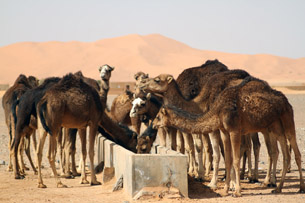
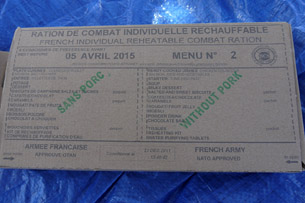
Teams had to find six checkpoints on the race's first day, a looped leg with an official distance of 125 kilometers, nine hours given as the time to completion. Serra's reveille comes at 4:00 AM every morning through a bullhorn, "Bon matin, it's four o'clock, time to get up." Breakfast and the day's race briefing are at 5:00 AM. Competitors hit the start line at 6:00 AM, two teams sent off every two minutes. Even though speed isn't the primary concern, the last checkpoint closes at around 7:00 PM every evening.Even though speed isn't the primary concern, the last checkpoint closes at around 7:00 PM every evening.
Four American teams had come. Team No. 107, Jo Hannah (driver) and Susanah Hoehn (navigator) from San Diego, driving the 2014 Range Rover Sport Supercharged that Paul Dallenbach drove to the Production Class record at Pikes Peak last year. They'd never been in a race of any kind, but on the prologue they hit all three checkpoints and were back in the bivouac at 6:00 PM. Team No. 171, JoMarie Fecci and Isabelle Nikolic, were in a Jeep Wrangler, in the race to get proficient at navigating Africa in preparation for a documentary. Team No. 182, Rachelle Croft and Rhonda Cahill, each a mother of three from Bozeman, MT. It was Croft's second time, Cahill's first, driving a rented truck that started the rally by breaking down every chance it got. Team No. 183, Emme Hall and Sabrina Howells, in their second rally and aiming for the top 20. Hall, an off-road racer where "race" means "speed," was focused on learning to drive slowly. Navigator Howells was learning to become one with the map and the land, a diviner of flags.
This was a "toughen up" day, with rocky plains, camel grass and dunes to conquer, but easy natural features to navigate by. The first team to return to the bivouac was 160, Elisabete Jacinto – who normally drives Man T4 trucks in Dakar – and navigator Valérie Dot. They almost won the race last year, in the lead on the last day until they broke their oil pan. They got to the bivouac at 4:00 PM, ten hours after the day began. At 6:45 PM, well after dark, only half the field had made it back.
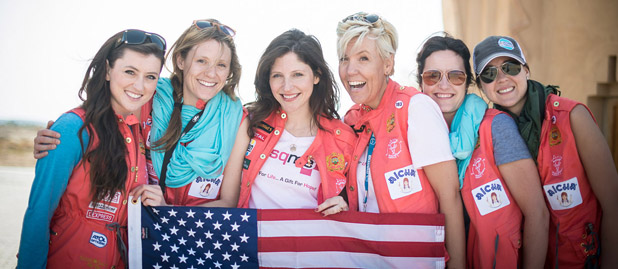
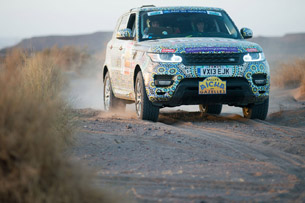
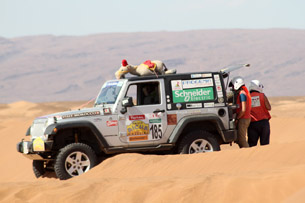
Some had been caught out in Erg Moulay Aamar, a stretch of dunes that ate up the hours when trucks got stuck or navigators kept losing their sighted heading. Croft and Cahill had alternator problems and couldn't stop the truck for risk of stalling, so Cahill had to get out and run in front for an hour to lead the way. Forty-seven teams including Hall and Howells got stuck in a sandstorm that raged for hours. Howells said, "We couldn't see two feet in front of us. We kept thinking we saw headlights but it turned out it was lightning." The last competitor didn't make it back until 12:30 AM. The sandstorm blew all night.
There were eight flags to find on the second day, 192 km the official distance, 10:40 the estimated time – 11 mph for almost 11 hours. This day introduced cauliflower fields, treacherous oueds, indistinct navigational features and heat haze to make it worse. The calls for mechanical assistance to fix oil leaks, fuel leaks, clutches, batteries, rang in.47 teams including Hall and Howells got stuck in a sandstorm that raged for hours.
Then there was the elusive CP 4, hidden on the far side of a 3,300-foot cliff that had one pass.
Susanah Hoehn said, "We started dropping down and we didn't see anything but mirages." But they managed to find all of the real flags in time – they hadn't missed one in any stage so far – even after having to change a blown tire.
Hall and Howells got six of the checkpoints before the last one closed for the evening, Hall still battling her sense of speed. "I know it wasn't a race but I found myself racing against the sun. I told myself I had to back off. I think I've gone from going way too fast to going way too slow."
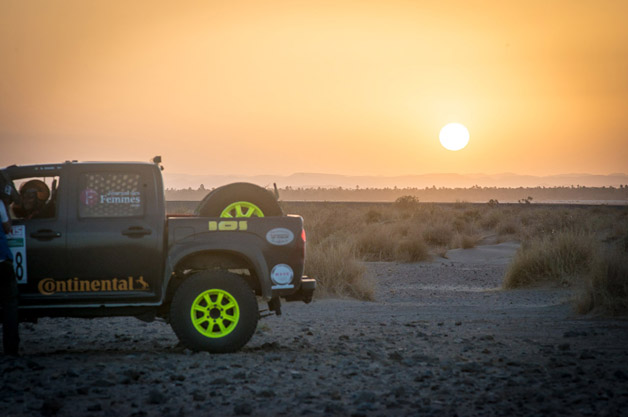
The first teams came in 11 hours after the start. After 14 hours, only 94 teams had returned. At 11:30 PM, Race Direction said ten teams wouldn't make it back to the bivouac, opting to sleep in the desert. They'd have until 12:00 PM the next day to make it back to the bivouac and get started on the next stage, but they wouldn't be ranked anymore. At 9:00 AM the next morning, five of those lost teams were still wandering the desert looking for the bivouac.The stress accumulates with compound interest, paying its dividend by the minute.
Among those who did make it back on the eve of just the second day, many of them were appeared worn down beyond two days of real competition. Yet in that 48 days, many had spent more than half of it on the course enduring fatigue vectors from all sides: the anxiety and adrenaline of competition, knowing a two-degree heading error can make missing a flag the least of your problems, staring at sand and rocks for 12 hours out the windshield, crisscrossing a proving ground while bathing in the heat sink of the northern Sahara. The stress accumulates with compound interest, paying its dividend by the minute.
And there were six more days to go.
We'll recount them in Part 2.
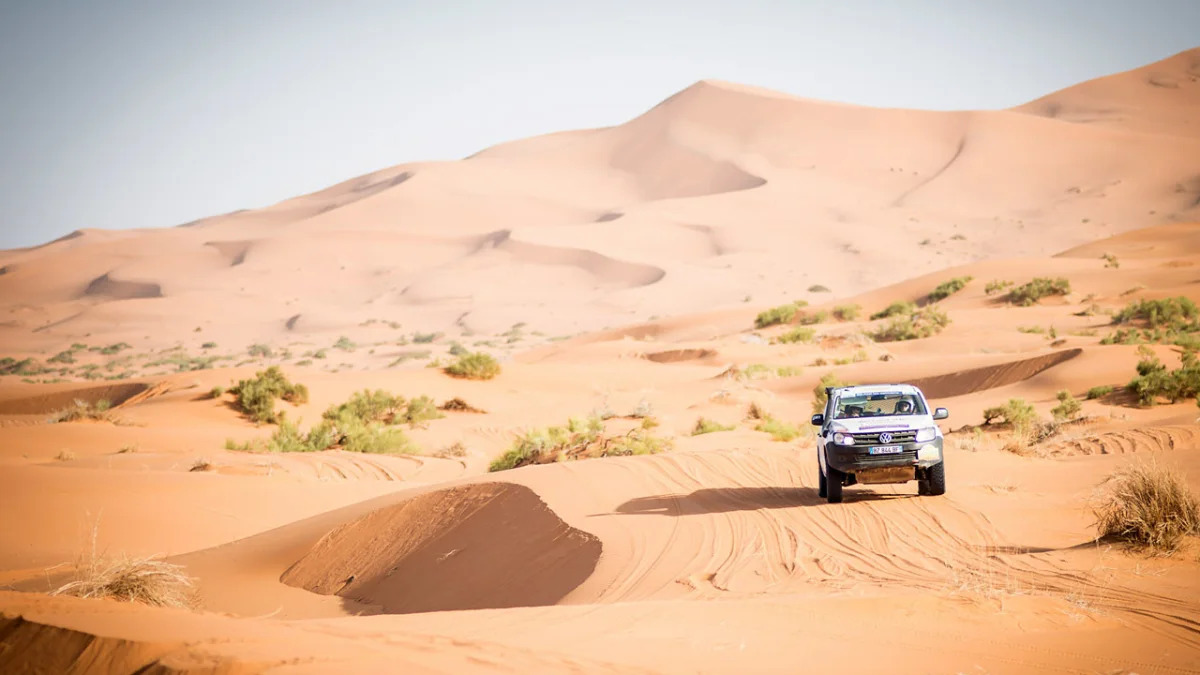









Sign in to post
Please sign in to leave a comment.
Continue